The international community has recognized the special circumstances facing small island developing states, but has done little more to help. Nowhere is this more apparent than in the global financial system, where SIDS often must fend for themselves – small fish at the mercy of predatory sharks.
KINGSTOWN/APIA/VICTORIA – It is too early to tell whether all the talk about reforming development finance at this year’s International Monetary Fund and World Bank Spring Meetings will translate into meaningful policy action for the Global South. But multilateral financial institutions increasingly recognize the need to evolve to remain relevant in light of new global challenges, and world leaders are paying attention to innovative approaches, such as Barbadian Prime Minister Mia Amor Mottley’s Bridgetown Initiative to address the immediate financial needs of debt-distressed countries or Secretary-General António Guterres’s stimulus to deliver the 2030 Agenda for Sustainable Development.
Better late than never. The current international financial architecture is outdated and ill-equipped to handle the massive disruptions caused by climate change, a global economic downturn, the COVID-19 pandemic, and changes in income distribution fueled by technological developments and globalized competition. The unique geographic and demographic characteristics of small island developing states (SIDS) like ours make it even harder to cope with these disruptions.
The remoteness of SIDS, coupled with limited usable land and small populations, all but guarantee significant barriers to integration in a fast-paced global economy. Our countries are overdependent on imports, especially of food and energy, and often rely heavily on a single economic sector (usually tourism), making us prone to supply-chain disruptions and other external shocks.
The United Nations has long recognized our special circumstances, but the international community has done little to help us manage them. Nowhere is this more apparent than in the global financial system, where we are often left to fend for ourselves – small fish at the mercy of predators that profit handsomely from the repackaging of our debt.
The problem is that concessional financing is primarily tied to traditional measures of development, namely a country’s gross national income (GNI). But the relatively high income of SIDS – more than half qualify as upper middle-income countries – prevents many from accessing the cheap finance offered to the lowest-income countries. Using income as the sole determinant for financial assistance means more debt for SIDS, which disproportionately suffer the effects of global warming and other external shocks. There is no way to escape this Catch-22 without a credible framework that takes these vulnerabilities into account.
The Multidimensional Vulnerability Index, currently under consideration at the UN General Assembly could be a lifesaver. The MVI, a universal ranking based on developing countries’ susceptibility to external shocks, provides the basis for international institutions like the IMF and the World Bank to allocate the concessional financing needed to prepare and recover from unforeseen crises. While the Bridgetown Initiative addresses the immediacy of the climate-change threat, SIDS measure highly across all three dimensions of vulnerability: economic and social, as well as environmental.
For example, the gas crisis in Europe and high inflation in the United States, both fueled by the war in Ukraine, have dominated headlines over the past year. Yet the war’s economic ramifications have been especially painful for remote island states like the Seychelles, where the energy shortage is compounded by higher transport costs. High inflation and soaring airfares have deterred European visitors, undermining the post-COVID recovery of the country’s tourism industry, a crucial source of budget revenue.
As for the social dimension, the pandemic has had a profound effect on Samoa and other Pacific island states. Some may argue that they were spared the worst health outcomes of COVID-19, owing to their isolation. But one must also consider their capacity constraints, including their limited ability to provide health services. Without the workers and facilities needed to weather the waves of infection experienced by larger countries, these states were forced to implement stricter lockdown measures for far longer than the rest of the world. The social, psychological, and economic effects of these policies will be felt for a generation or more.
Finally, while higher temperatures and rising sea levels pose a grave threat to SIDS, they are not the only environmental concerns. The population of St. Vincent and the Grenadines is at the mercy of an active volcano – a ticking time bomb that last went off in 2021. Moreover, the island chain sits in the Atlantic hurricane belt; these storms will become stronger and more frequent as the climate crisis deepens. When a country’s GDP could be wiped out in an instant, how relevant is income as a measure of vulnerability?
It is true that GNI per capita remains the most reliable way to identify the least-developed countries, which are in serious need of financial aid and other concessional resources to stand on their own. The MVI does not seek to replace GNI or interfere in the provision of material assistance to those countries that need it most. Instead, it is designed to complement this process by identifying vulnerable countries that also deserve concessional financing but currently have no access to it.
It will always feel like an inconvenient time to reform the international financial architecture. But that architecture is denying adequate shelter to vulnerable countries like ours: we are being forced to pay a premium for unsound accommodation. If multilateral financial institutions take too long to address the design flaws, the entire structure will eventually collapse.
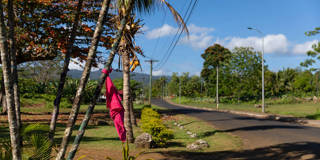

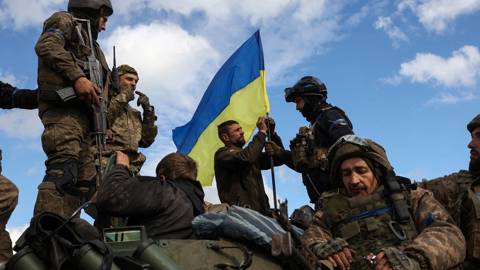
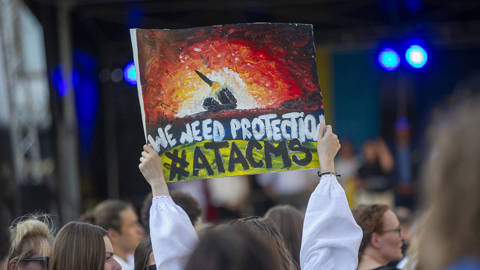
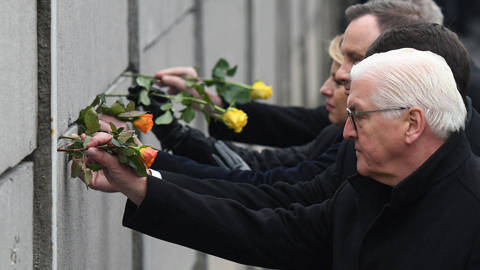

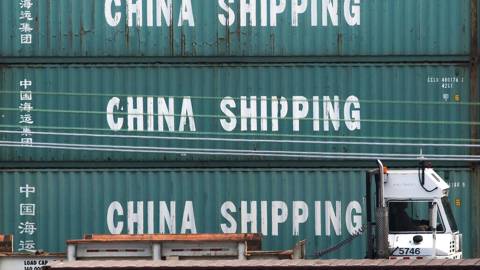

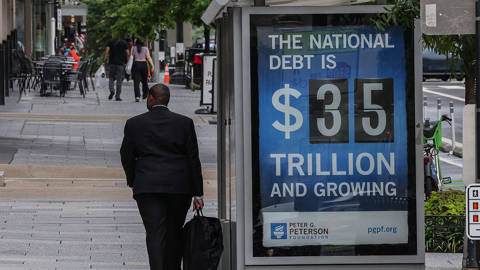
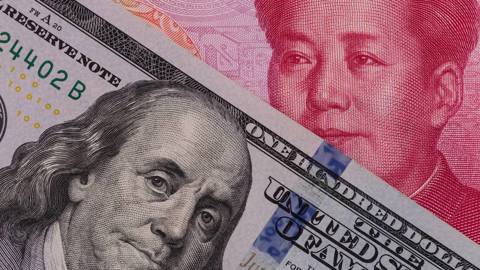
KINGSTOWN/APIA/VICTORIA – It is too early to tell whether all the talk about reforming development finance at this year’s International Monetary Fund and World Bank Spring Meetings will translate into meaningful policy action for the Global South. But multilateral financial institutions increasingly recognize the need to evolve to remain relevant in light of new global challenges, and world leaders are paying attention to innovative approaches, such as Barbadian Prime Minister Mia Amor Mottley’s Bridgetown Initiative to address the immediate financial needs of debt-distressed countries or Secretary-General António Guterres’s stimulus to deliver the 2030 Agenda for Sustainable Development.
Better late than never. The current international financial architecture is outdated and ill-equipped to handle the massive disruptions caused by climate change, a global economic downturn, the COVID-19 pandemic, and changes in income distribution fueled by technological developments and globalized competition. The unique geographic and demographic characteristics of small island developing states (SIDS) like ours make it even harder to cope with these disruptions.
The remoteness of SIDS, coupled with limited usable land and small populations, all but guarantee significant barriers to integration in a fast-paced global economy. Our countries are overdependent on imports, especially of food and energy, and often rely heavily on a single economic sector (usually tourism), making us prone to supply-chain disruptions and other external shocks.
The United Nations has long recognized our special circumstances, but the international community has done little to help us manage them. Nowhere is this more apparent than in the global financial system, where we are often left to fend for ourselves – small fish at the mercy of predators that profit handsomely from the repackaging of our debt.
The problem is that concessional financing is primarily tied to traditional measures of development, namely a country’s gross national income (GNI). But the relatively high income of SIDS – more than half qualify as upper middle-income countries – prevents many from accessing the cheap finance offered to the lowest-income countries. Using income as the sole determinant for financial assistance means more debt for SIDS, which disproportionately suffer the effects of global warming and other external shocks. There is no way to escape this Catch-22 without a credible framework that takes these vulnerabilities into account.
The Multidimensional Vulnerability Index, currently under consideration at the UN General Assembly could be a lifesaver. The MVI, a universal ranking based on developing countries’ susceptibility to external shocks, provides the basis for international institutions like the IMF and the World Bank to allocate the concessional financing needed to prepare and recover from unforeseen crises. While the Bridgetown Initiative addresses the immediacy of the climate-change threat, SIDS measure highly across all three dimensions of vulnerability: economic and social, as well as environmental.
BLACK FRIDAY SALE: Subscribe for as little as $34.99
Subscribe now to gain access to insights and analyses from the world’s leading thinkers – starting at just $34.99 for your first year.
Subscribe Now
For example, the gas crisis in Europe and high inflation in the United States, both fueled by the war in Ukraine, have dominated headlines over the past year. Yet the war’s economic ramifications have been especially painful for remote island states like the Seychelles, where the energy shortage is compounded by higher transport costs. High inflation and soaring airfares have deterred European visitors, undermining the post-COVID recovery of the country’s tourism industry, a crucial source of budget revenue.
As for the social dimension, the pandemic has had a profound effect on Samoa and other Pacific island states. Some may argue that they were spared the worst health outcomes of COVID-19, owing to their isolation. But one must also consider their capacity constraints, including their limited ability to provide health services. Without the workers and facilities needed to weather the waves of infection experienced by larger countries, these states were forced to implement stricter lockdown measures for far longer than the rest of the world. The social, psychological, and economic effects of these policies will be felt for a generation or more.
Finally, while higher temperatures and rising sea levels pose a grave threat to SIDS, they are not the only environmental concerns. The population of St. Vincent and the Grenadines is at the mercy of an active volcano – a ticking time bomb that last went off in 2021. Moreover, the island chain sits in the Atlantic hurricane belt; these storms will become stronger and more frequent as the climate crisis deepens. When a country’s GDP could be wiped out in an instant, how relevant is income as a measure of vulnerability?
It is true that GNI per capita remains the most reliable way to identify the least-developed countries, which are in serious need of financial aid and other concessional resources to stand on their own. The MVI does not seek to replace GNI or interfere in the provision of material assistance to those countries that need it most. Instead, it is designed to complement this process by identifying vulnerable countries that also deserve concessional financing but currently have no access to it.
It will always feel like an inconvenient time to reform the international financial architecture. But that architecture is denying adequate shelter to vulnerable countries like ours: we are being forced to pay a premium for unsound accommodation. If multilateral financial institutions take too long to address the design flaws, the entire structure will eventually collapse.